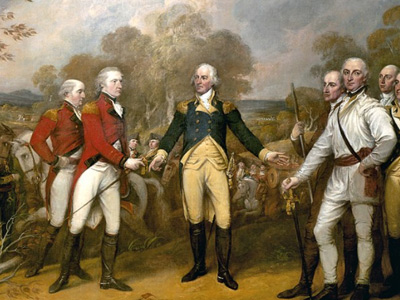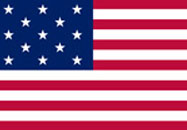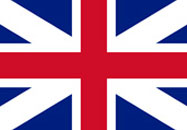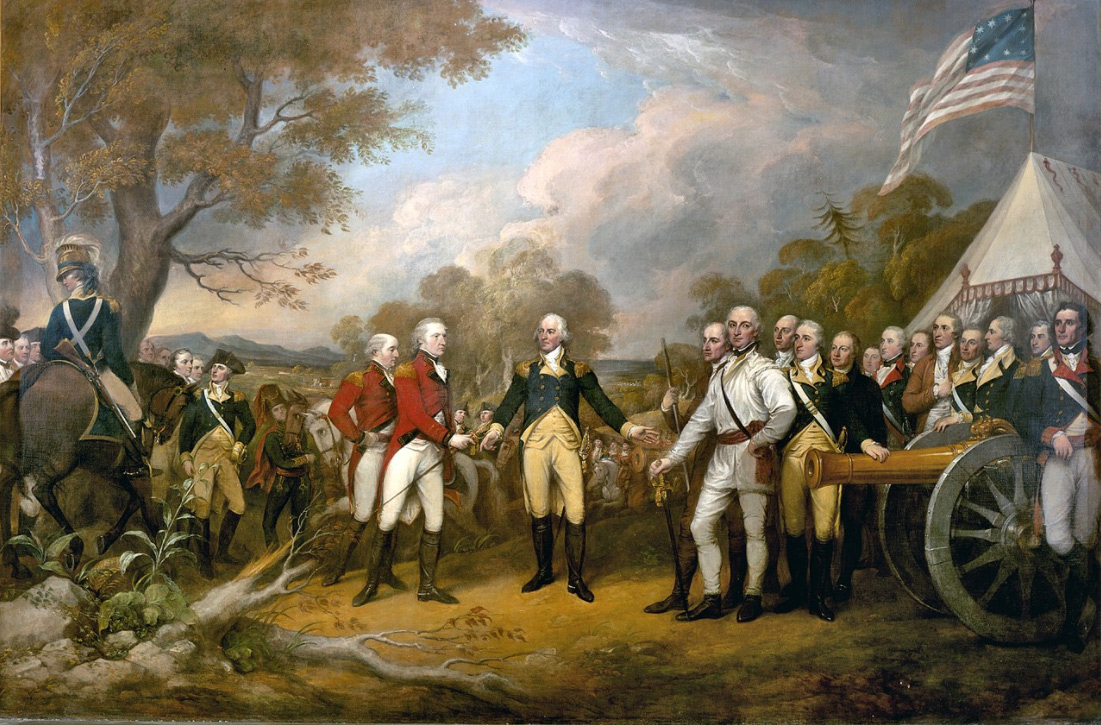Battles of Saratoga (1777)
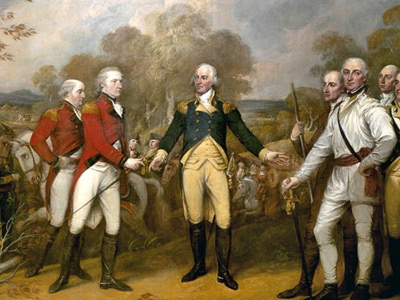
Interlude
Burgoyne's council discussed whether to attack the next day, and a decision was reached to delay further action at least one day, to September 21. The army moved to consolidate the position closer to the American line while some men collected their dead. The attack on the 21st was called off when Burgoyne received a letter dated September 12 from Henry Clinton, who was commanding the British garrison in New York City. Clinton suggested that he could "make a push at [Fort] Montgomery in about ten days." (Fort Montgomery was an American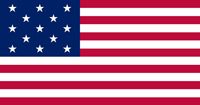 The United States of America (USA), is a country in North America. The American Revolutionary War (April 19, 1775 - September 3, 1783) was the military conflict in which American patriot forces under George Washington's command defeated the British, establishing and securing the independence of the United States. After the Revolution, the United States gained independence, the first nation-state founded on Enlightenment principles of liberal democracy. post on the Hudson River, in the New York Highlands south of West Point). If Clinton left New York on September 22, "about ten days" after he wrote the letter, he still could not hope to arrive in the vicinity of Saratoga before the end of the month. Burgoyne, running low on men and food, was still in a very difficult position, but he decided to wait in the hope that Clinton would arrive to save his army. Burgoyne wrote to Clinton on September 23, requesting some sort of assistance or diversion to draw Gates' army away. Clinton sailed from New York on October 3, and captured Forts Montgomery and Clinton on October 6. The furthest north any of his troops reached was Clermont, where they raided the estate of the prominent Patriot Livingston family on October 16.
The United States of America (USA), is a country in North America. The American Revolutionary War (April 19, 1775 - September 3, 1783) was the military conflict in which American patriot forces under George Washington's command defeated the British, establishing and securing the independence of the United States. After the Revolution, the United States gained independence, the first nation-state founded on Enlightenment principles of liberal democracy. post on the Hudson River, in the New York Highlands south of West Point). If Clinton left New York on September 22, "about ten days" after he wrote the letter, he still could not hope to arrive in the vicinity of Saratoga before the end of the month. Burgoyne, running low on men and food, was still in a very difficult position, but he decided to wait in the hope that Clinton would arrive to save his army. Burgoyne wrote to Clinton on September 23, requesting some sort of assistance or diversion to draw Gates' army away. Clinton sailed from New York on October 3, and captured Forts Montgomery and Clinton on October 6. The furthest north any of his troops reached was Clermont, where they raided the estate of the prominent Patriot Livingston family on October 16.
Unknown to either side at Saratoga, General Lincoln and Colonel John Brown had staged an attack against the British The Kingdom of Great Britain was a sovereign country in Western Europe from 1 May 1707 to the end of 31 December 1800. The state was created by the 1706 Treaty of Union and ratified by the Acts of Union 1707, which united the kingdoms of England (which included Wales) and Scotland to form a single kingdom encompassing the whole island of Great Britain and its outlying islands, with the exception of the Isle of Man and the Channel Islands. position at Fort Ticonderoga. Lincoln had collected 2,000 men at Bennington by early September. Brown and a detachment of 500 men captured poorly defended positions between Ticonderoga and Lake George, and then spent several days ineffectually bombarding the fort. These men, and some of the prisoners they freed along the way, were back in the American camp by September 29.
The Kingdom of Great Britain was a sovereign country in Western Europe from 1 May 1707 to the end of 31 December 1800. The state was created by the 1706 Treaty of Union and ratified by the Acts of Union 1707, which united the kingdoms of England (which included Wales) and Scotland to form a single kingdom encompassing the whole island of Great Britain and its outlying islands, with the exception of the Isle of Man and the Channel Islands. position at Fort Ticonderoga. Lincoln had collected 2,000 men at Bennington by early September. Brown and a detachment of 500 men captured poorly defended positions between Ticonderoga and Lake George, and then spent several days ineffectually bombarding the fort. These men, and some of the prisoners they freed along the way, were back in the American camp by September 29.
In the American camp, the mutual resentment between Horatio Gates and Benedict Arnold finally exploded into open hostility. Gates quickly reported the action of September 19 to the Congress and Governor George Clinton of New York, but he failed to mention Arnold at all. The field commanders and men universally credited Arnold for their success. Almost all the troops involved were from Arnold's command and Arnold was the one directing the battle while Gates sat in his tent. Arnold protested, and the dispute escalated into a shouting match that ended with Gates relieving Arnold of his command and giving it to Benjamin Lincoln. Arnold asked for a transfer to Washington's command, which Gates granted, but instead of leaving he remained in his tent. There is no documentary evidence for a commonly recounted anecdote that a petition signed by line officers convinced Arnold to stay in camp.
During this period there were almost daily clashes between pickets and patrols of the two armies. Morgan's sharpshooters, familiar with the strategy and tactics of woodland warfare, constantly harassed British patrols on the western flank.
As September passed into October it became clear that Clinton was not coming to help Burgoyne, who put the army on short rations on October 3. The next day, Burgoyne called a war council in which several options were discussed, but no conclusive decisions were made. When the council resumed the next day, Riedesel proposed retreat, in which he was supported by Fraser. Burgoyne refused to consider it, insisting that retreat would be disgraceful. They finally agreed to conduct an assault on the American left flank with two thousand men, more than one-third of the army, on October 7. The army he was attacking, however, had grown in the interval. In addition to the return of Lincoln's detachment, militiamen and supplies continued to pour into the American camp, including critical increases in ammunition, which had been severely depleted in the first battle. The army Burgoyne faced on October 7 was more than 12,000 men strong and was led by a man who knew how much trouble Burgoyne was in. Gates had received consistent intelligence from the stream of deserters leaving the British lines and had also intercepted Clinton's response to Burgoyne's plea for help.
HISTORY
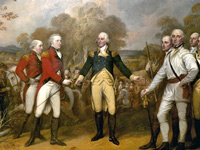
RESOURCES
This article uses material from the Wikipedia article "Battles of Saratoga (1777)", which is released under the Creative Commons Attribution-Share-Alike License 3.0.
© Stories Preschool. All Rights Reserved.
